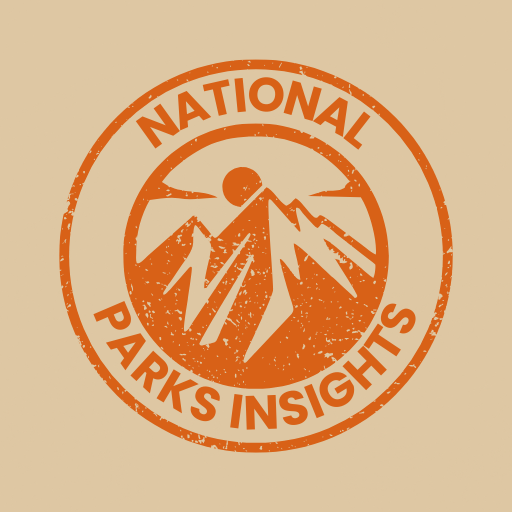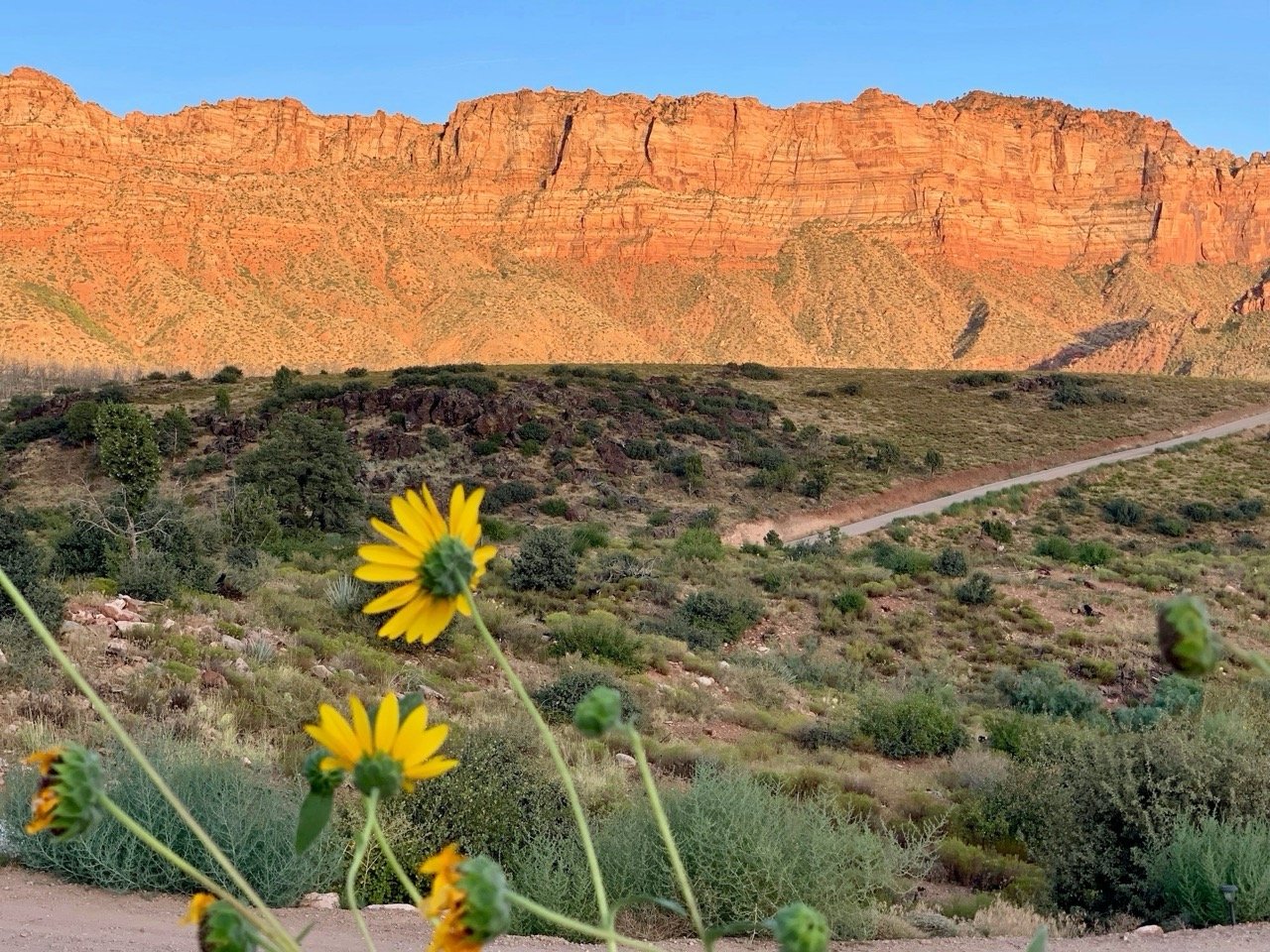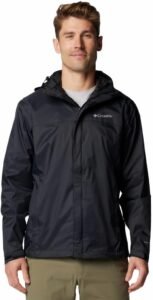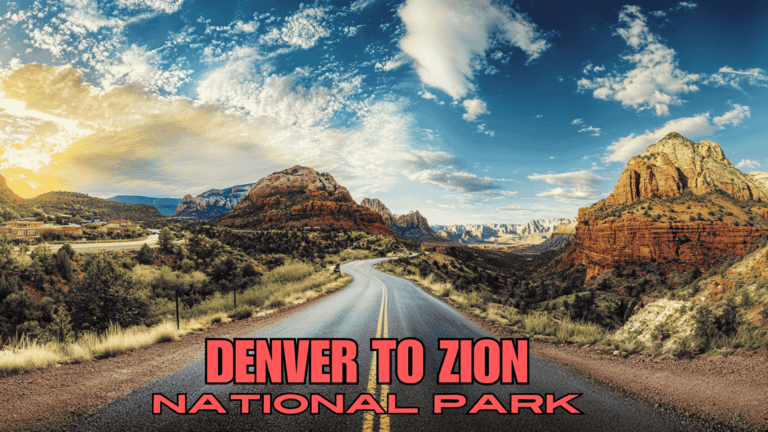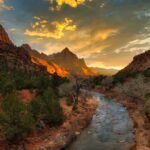Best Time to Visit Zion National Park
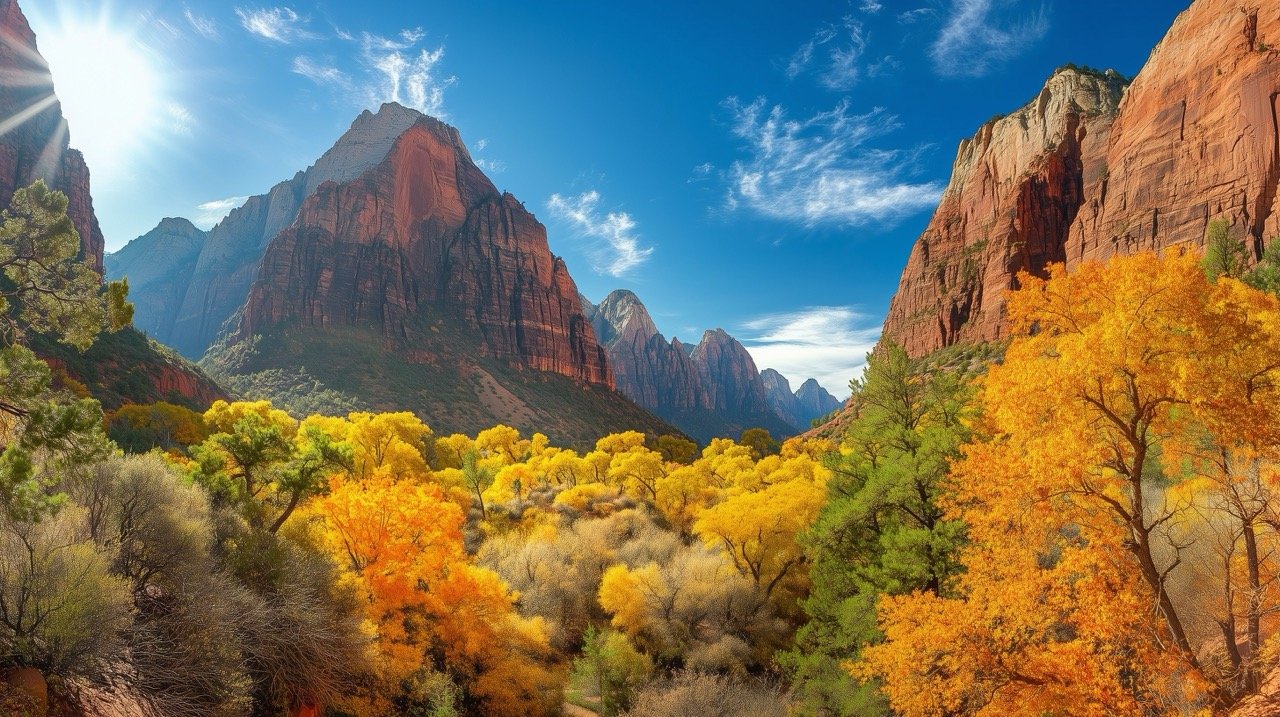
Choosing the best time to visit Zion National Park is essential for making the most of its stunning landscapes and outdoor activities.
Zion National Park is a stunning destination that offers unique experiences throughout the year. Understanding the best time to visit Zion National Park can enhance your trip, whether you’re seeking mild weather, vibrant landscapes, or fewer crowds.
Why Spring is the Best Time to Visit Zion National Park
Spring, especially from April to May, is a fantastic time to explore Zion National Park. The weather is just right, with temperatures ranging from the 60s to 80s Fahrenheit (15-27°C), making it comfy for sightseeing and hiking trails in Zion National Park.
Spring Highlights:
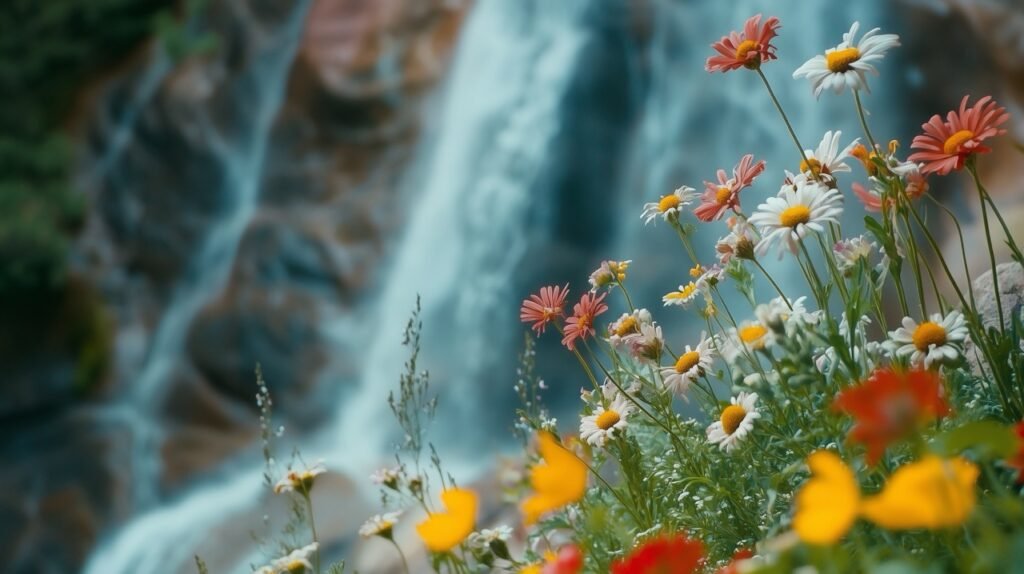
- Blooming Flora: Spring showers bring wildflowers, splashing vibrant colors across the park.
- Waterfalls: Melting snow from higher elevations creates stunning waterfalls, perfect for those Instagram shots.
- Wildlife Watching: Spring is prime time for spotting animals as they become more active after winter.
Spring is often considered the best time to visit Zion National Park. The temperatures are pleasant, ranging from the 60s to 80s °F, making it perfect for hiking and exploring. Wildflowers bloom across the park, adding bursts of color to the already breathtaking scenery. Wildlife is active, and waterfalls are at their peak due to melting snow. Visitor traffic is moderate, allowing for a more relaxed experience.
| Month | Temperature (°F) | Visitor Traffic |
|---|---|---|
| April | 60-70 | Low |
| May | 70-80 | Moderate |
Exploring Zion in Fall: Another Great Time to Visit
Fall (September to October) is another great time to visit Zion. The temperatures are mild, ranging from the 60s to 80s Fahrenheit (15-27°C), and the summer crowds start to thin out, giving you a more peaceful experience.
Fall Highlights:
- Stunning Foliage: The fall colors in Zion are jaw-dropping, making your hikes even more scenic.
- Ideal for Hiking: Fall is perfect for hiking, with most trails open and fewer people around. It’s also the best time to tackle Hiking The Narrows.
- Comfortable Weather: Cooler temps make it great for outdoor activities without the summer heat.
Another ideal period is fall, which many regard as the best time to visit Zion National Park. The weather is mild, and the foliage transforms into a vibrant tapestry of reds and yellows. With fewer crowds than in summer, it’s an excellent opportunity for hiking and photography.
September Seasonal Highlights
September offers a perfect balance between summer’s heat and the cooler fall temperatures. Highs reach around 91°F with lows around 60°F, making it ideal for hiking without the intense heat of the summer months. This time of year also marks the start of Zion’s fall foliage, with the vibrant colors beginning to emerge at higher elevations. Whether you’re exploring Angels Landing or taking in the views from Observation Point, the scenery is stunning with fewer crowds and more comfortable conditions(Zion Ponderosa Resort)(Zion Ponderosa Resort).
While summer is popular, it can be hot, with temperatures soaring into the 90s and 100s °F. If you plan your visit during this season, consider hiking early in the morning and staying hydrated. Despite the heat, summer remains a favorite for activities like hiking The Narrows and watching wildlife.
Events and Activities in September
If you’re visiting in September, don’t miss out on special events such as the Zion Canyon Music Festival, held every Saturday until the 28th. For those seeking adventure, the Brushy Cove Fall Jeep Tour is a must, offering panoramic views of Zion’s incredible fall colors. Both activities are perfect for making the most of Zion’s cooler weather and stunning autumn landscape (Day Trip Nomad)(Zion Ponderosa Resort).
| Month | Temperature (°F) | Visitor Traffic |
|---|---|---|
| September | 70-80 | Moderate |
| October | 60-70 | Low |
Both spring and fall have their own charm, making them the best times to visit Zion National Park. For more tips on planning your trip, including details on camping in Zion National Park and the Zion National Park entrance fee, check out our other resources.
What to Expect if Visiting Zion in Summer
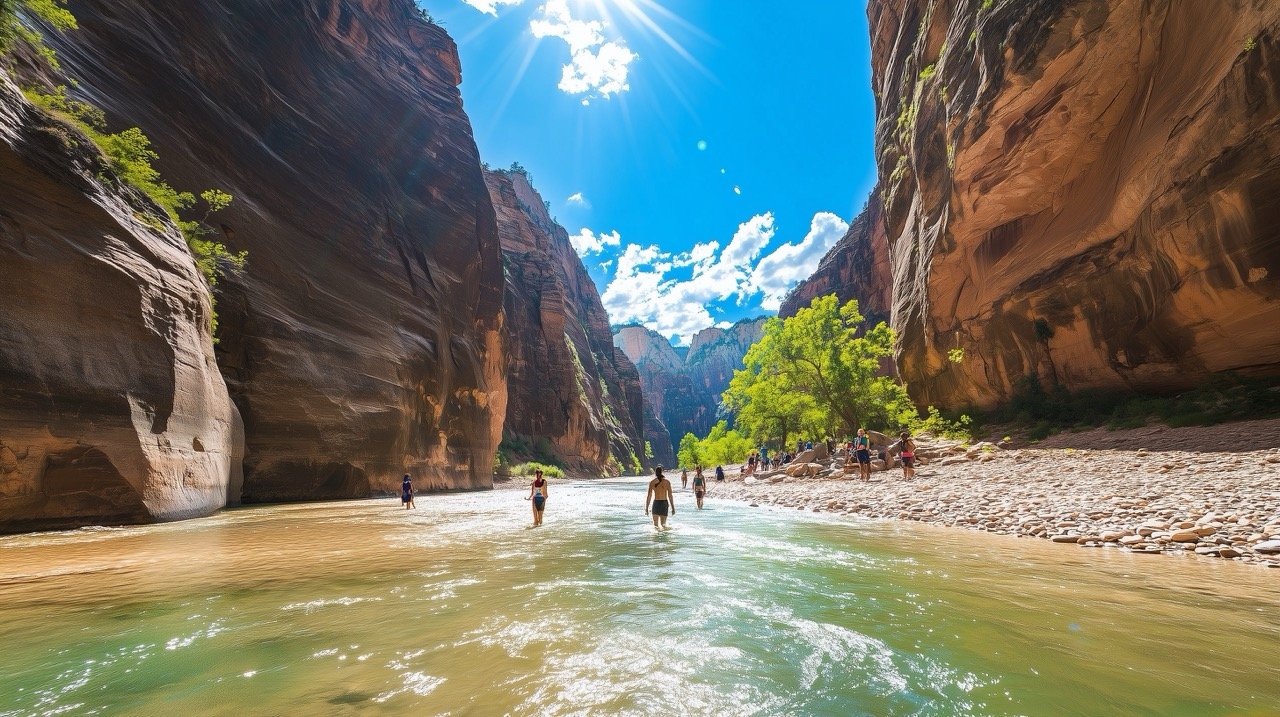
Summer’s a hit at Zion National Park, but the scorching heat means you gotta plan smart to have a blast and stay safe.
Click here to check exciting stays at Zion National Park
Beat the Heat
From June to September, Zion gets blazing hot, often hitting the 90s and even 100s Fahrenheit (32-38°C). Here’s how to keep your cool:
- Stay Hydrated: Chug water all day. Dehydration sneaks up fast in this dry heat.
- Early Bird: Start your hikes at the crack of dawn to dodge the midday sun.
- Sun Gear: Slather on sunscreen, rock a wide-brimmed hat, and wear light, airy clothes.
- Chill Out: Take lots of breaks in the shade to avoid overheating.
- Electrolytes: Pack some electrolyte tablets or drinks to replace what you sweat out.
| Time of Day | Temperature Range |
|---|---|
| Morning (6 AM – 10 AM) | 60-80°F (15-27°C) |
| Midday (11 AM – 3 PM) | 90-100°F (32-38°C) |
| Evening (4 PM – 8 PM) | 70-85°F (21-29°C) |
Fun Stuff to Do
Even with the heat, summer’s packed with cool activities at Zion:
Hiking
- The Narrows: A top summer hike. You’ll be wading through the Virgin River, which is a great way to cool off. Just watch out for flash floods, especially after rain.
- Angels Landing: A tough hike with steep drops. Best to tackle it early to avoid the worst of the heat.
Check out more hiking trails in Zion National Park.
Camping
- Watchman Campground: Near the south entrance, this spot has killer views and easy trail access. Book early!
- South Campground: Another fave, close to the visitor center and shuttle stops.
Get the scoop on camping in Zion National Park.
Scenic Drives
- Zion Canyon Scenic Drive: Shuttle buses run here in summer, taking you to trailheads and viewpoints.
- Kolob Canyons Road: Less crowded, with jaw-dropping red rock views.
Wildlife Watching
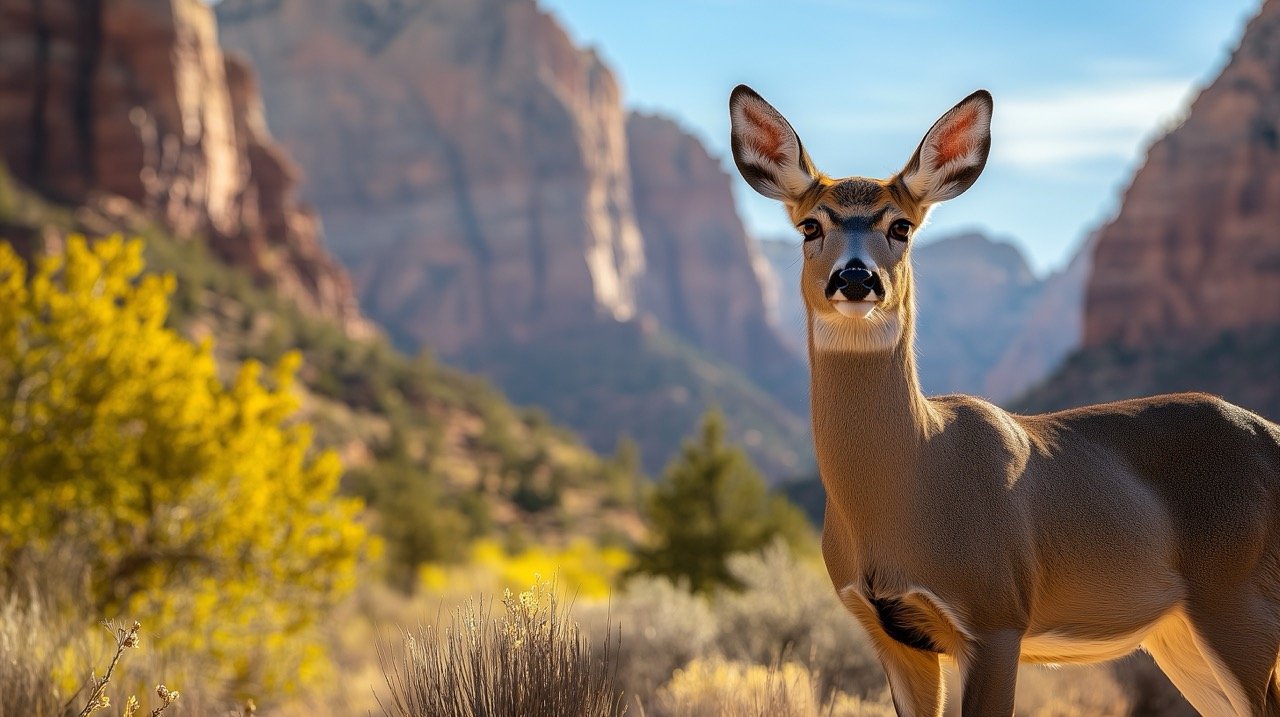
- Wildlife: Summer’s prime time to see bighorn sheep, mule deer, and lots of birds.
Learn more about the wildlife in Zion National Park.
Follow these tips and dive into the activities to make your summer trip to Zion National Park a safe and unforgettable adventure!
Why Winter Could be the Best Time to Visit Zion National Park for Solitude

Why Winter Rocks
Winter at Zion National Park is like stepping into a snow globe. From November to February, the park transforms into a quiet, serene wonderland with fewer people around. Imagine the stunning views dusted with snow, adding a magical touch to your adventure. Plus, you get to drive your own car through the park—something you can’t do in the busier seasons.
One of the best parts? Scoring permits for popular hikes like Angels Landing is way easier. No more battling the crowds; wintertime permits are less competitive, letting you enjoy these iconic trails in peace. Sure, it’s chilly, but the park’s beauty and calm make it totally worth it.
| Month | Average High (°F) | Average Low (°F) | Precipitation (in) |
|---|---|---|---|
| November | 59 | 30 | 1.1 |
| December | 50 | 25 | 1.5 |
| January | 54 | 26 | 1.6 |
| February | 57 | 29 | 1.5 |
Cold Weather Hacks
Planning a winter trip to Zion? Here are some tips to keep you warm and safe:
- Layer Up: The weather can be all over the place, so wear layers to stay comfy.
- Good Boots: Insulated, waterproof boots with good grip are a must for snowy or icy trails.
- Pack Smart: Don’t forget a hat, gloves, and a scarf. A thermos with a hot drink can be a lifesaver.
- Check Roads: Before you go, check the park’s website for road updates and closures.
- Stay Hydrated: Even when it’s cold, you need to drink water. Keep a bottle handy and sip often.
- Mind the Clock: Days are shorter in winter, so start your hikes early and bring a headlamp just in case.
Thinking about hiking? Check out our guide on hiking trails in Zion National Park for more tips. If camping is your thing, our article on camping in Zion National Park has you covered.
Winter in Zion is a peaceful, picture-perfect experience, ideal for those who crave solitude and snowy landscapes. With a bit of prep, you can soak in all the beauty this amazing park has to offer during the colder months.
Winter offers a serene experience with fewer visitors and snow-dusted landscapes. It’s often easier to secure permits for popular hikes like Angels Landing. Although cold weather and shorter daylight hours require preparation, many find winter to be the best time to visit Zion National Park for solitude and beauty.
Click here to check exciting stays at Zion National Park
Hiking Seasons
Exploring Zion National Park on foot is a blast, and picking the right season can make all the difference. Here’s a guide to help you figure out the best times for hitting the trails and tackling The Narrows.
Best Times for Trails
Fall is the sweet spot for hiking in Zion. Most trails are open, the weather’s just right, and the fall colors are a feast for the eyes. Plus, the crowds start to thin out, giving you a bit more peace and quiet. Spring is also a solid choice, with blooming wildflowers and comfy temps, though some trails might be off-limits due to snowmelt or high water.
| Season | Trail Conditions | Crowds | Scenery |
|---|---|---|---|
| Spring | Moderate, some closures | Moderate | Blooming wildflowers |
| Summer | Hot, open trails | High | Green landscapes |
| Fall | Excellent, open trails | Low to Moderate | Stunning fall colors |
| Winter | Snow/Ice on trails | Low | Snow-covered scenery |
For more details on specific trails, check out our guide on hiking trails in Zion National Park.
Hiking The Narrows
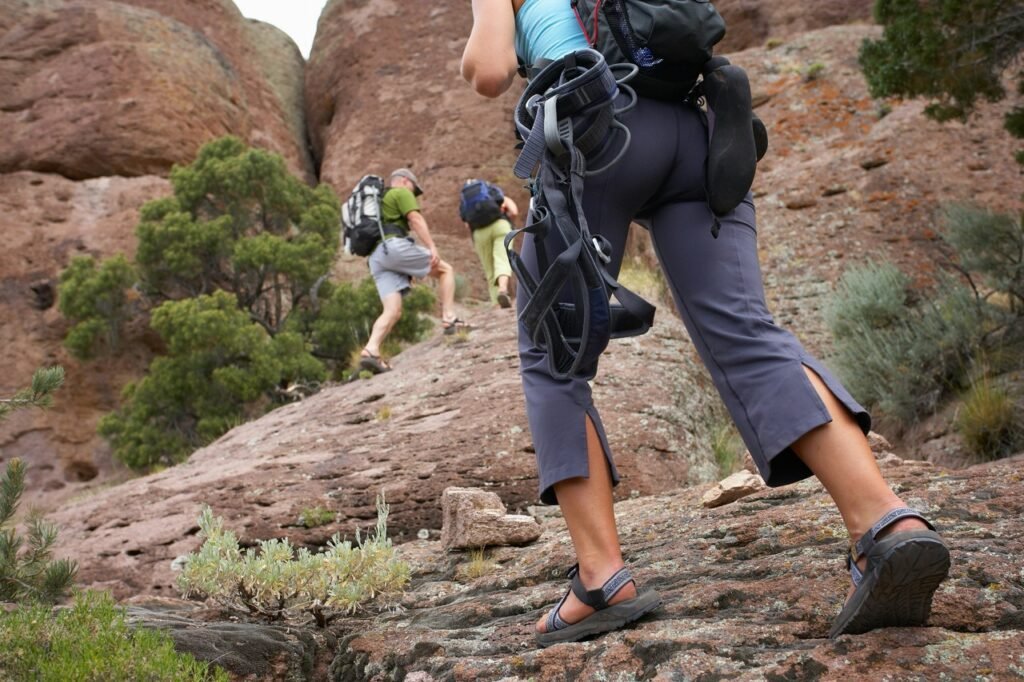
Hiking The Narrows is a one-of-a-kind adventure, as it involves wading through the Virgin River. June is usually the best time to go. The water levels are just right, and the risk of flash floods is lower compared to late summer and spring.
Summer and early fall are also popular for The Narrows, with lower water levels and warmer temps making for a safer and more fun trek. But watch out during spring and late summer—unpredictable snowmelt can make the river’s flow too strong, leading to closures.
| Month | Water Levels | Temperature | Flash Flood Risk |
|---|---|---|---|
| June | Manageable | Warm | Low |
| July – August | Low to Moderate | Hot | Moderate |
| September – October | Low | Warm | Low |
| March – May | High | Cool | High |
Always check the current conditions and forecasts before you go. Being prepared is key to a safe and fun hike. For more tips on hiking The Narrows, visit our page on hiking trails in Zion National Park.
To make your trip even better, consider checking out other activities like camping in Zion National Park and learning about the wildlife in Zion National Park.
Enjoy Zion National Park Without the Crowds
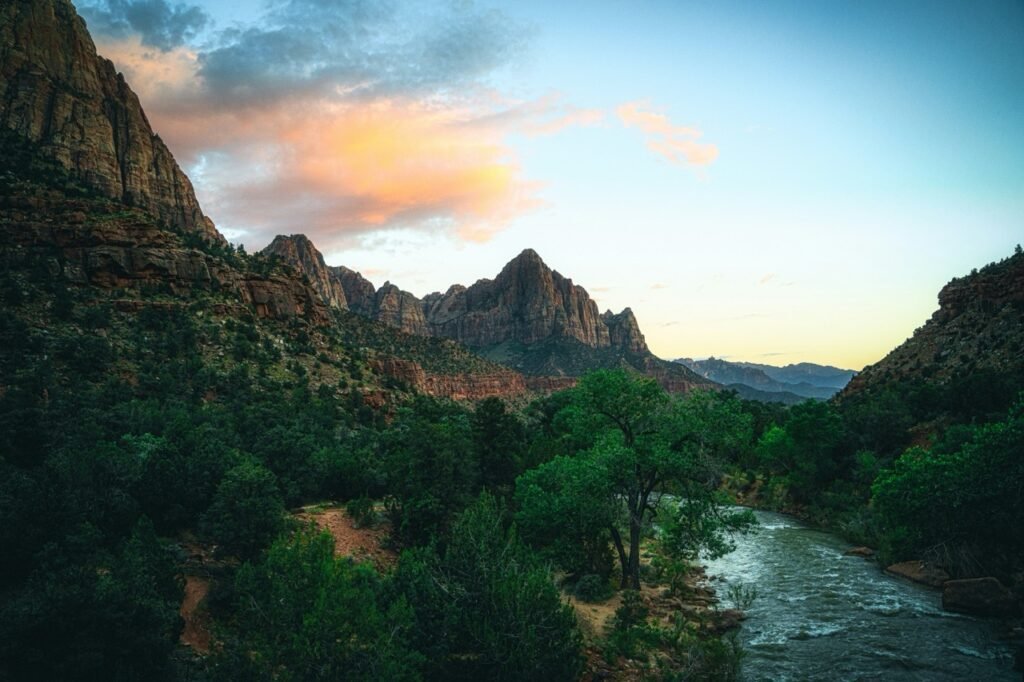
Want to soak in the beauty of Zion National Park without feeling like you’re in a theme park? Here’s how to dodge the crowds and truly connect with nature.
Best Times to Visit
For a more relaxed visit, aim for late fall, winter, or early spring. These months see fewer visitors, giving you more space to breathe and explore.
| Time of Year | Average Monthly Visitors |
|---|---|
| April – October | 500,000+ |
| November – March | 150,000 – 300,000 |
Late fall and early spring offer nice weather and fewer folks, while winter brings a magical touch with snow-dusted cliffs and quieter trails. Plus, it’s easier to snag a campsite or lodge reservation and get permits for popular hikes like Angels Landing.
Tips for Visiting
- Gear Up: Depending on when you visit, ensure you have appropriate clothing and gear. Spring and fall require layers for fluctuating temperatures.
- Avoiding Crowds: To enjoy a quieter experience, consider visiting during weekdays or early mornings.
- Plan Ahead: Check trail conditions and park alerts before your trip.
Columbia Watertight II Jacket
- Features: Waterproof, lightweight, and packable.
- Benefits: Essential for unexpected weather changes in Zion, especially during the spring when showers are common.
Tips for Finding Solitude
Here are some tricks to help you find your own slice of peace in Zion:
- Go on Weekdays: Weekends are busier, even in the off-season. Plan your trip for mid-week to dodge the crowds.
- Early Birds and Night Owls: The park is quieter early in the morning and late in the afternoon. Use these times for a more peaceful experience.
- Choose Less Popular Trails: Iconic hikes like Angels Landing and The Narrows are always packed. Try trails like the East Rim Trail or Kolob Canyons for some solitude.
- Use the Shuttle System: During peak season, the park runs a shuttle to cut down on traffic. Catch the earliest shuttle to get a head start on the trails.
- Stay Overnight: Camping in Zion lets you enjoy the park during the quieter hours of the evening and early morning. Campsites are less crowded in the off-season, making for a more peaceful stay.
By visiting during the off-peak months and following these tips, you can enjoy a serene and immersive experience in Zion National Park. For more details on entrance fees and other logistics, check out our additional resources.
Scenic Drives
Winter Driving
Winter at Zion National Park is like stepping into a peaceful wonderland. If you crave a quieter experience, this is your season. Unlike the bustling summer months when shuttles are the only way to get around, winter lets you drive your own car through the park.
From January to March, the Zion Canyon Scenic Drive opens up to private vehicles. This is your chance to explore without the usual crowds. But winter driving isn’t a walk in the park—here’s what you need to know:
- Check the Weather: Always peek at the forecast before you go. Snow and ice can turn roads into slip ‘n slides.
- Gear Up: Make sure your car has winter tires or chains if needed.
- Pack Essentials: Bring extra blankets, food, and water just in case you get stuck.
- Visitor Centers: Some facilities might be closed or have shorter hours, so plan ahead.
| Month | Average High (°F) | Average Low (°F) | Average Snowfall (inches) |
|---|---|---|---|
| January | 52 | 29 | 1.5 |
| February | 57 | 32 | 1.7 |
| March | 64 | 37 | 0.6 |
Want more winter tips? Check out our cold weather tips.
Seasonal Roads
Zion National Park has some roads that are pure eye candy, but they don’t all stay open year-round.
- Zion Canyon Scenic Drive: Open to private cars from January to March. The rest of the year, you’ll need to hop on a shuttle.
- Kolob Canyons Road: Open all year but can close temporarily if it snows.
- Kolob Terrace Road: Also open year-round but can be a no-go in winter due to snow. It takes you to some stunning high-altitude spots.
For more on exploring Zion, including hiking trails and camping options, check out our other guides.
